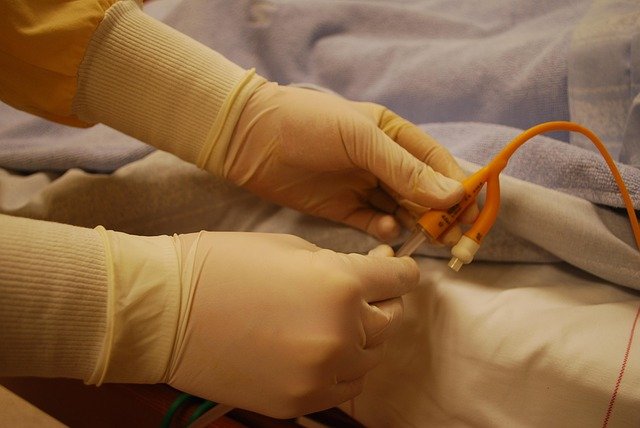Angioedema Swelling Symptoms: Causes, Triggers, and When to Seek Help
Angioedema is a medical condition characterized by deep swelling beneath the skin's surface, typically affecting the face, lips, tongue, throat, hands, and feet. Unlike surface-level hives or rashes, this swelling occurs in the deeper layers of skin and mucous membranes, creating distinctive puffiness that can develop rapidly and sometimes become life-threatening. Understanding the symptoms, underlying causes, and appropriate response measures is essential for anyone who experiences or witnesses these episodes, as prompt recognition can make the difference between effective treatment and serious complications.

Common Angioedema Swelling Symptoms One Should Recognize
The hallmark signs of angioedema present as asymmetrical, non-pitting swelling that feels soft to the touch. Most commonly, individuals notice sudden puffiness around the eyes, particularly the eyelids, which can become so pronounced that vision becomes impaired. Lip swelling often occurs simultaneously, creating a characteristic appearance where the lips appear dramatically enlarged and may feel tight or uncomfortable.
Tongue and throat swelling represent the most concerning symptoms, as they can compromise breathing and swallowing abilities. Patients may experience a sensation of throat tightness, difficulty speaking clearly, or changes in voice quality. Hand and foot swelling, while less immediately dangerous, can cause significant discomfort and functional limitations. The swelling typically develops over minutes to hours and can persist for 24 to 72 hours without treatment.
Types of Angioedema and How Symptoms Differ
Hereditary angioedema represents a genetic condition caused by deficiencies in C1 esterase inhibitor protein, leading to recurrent episodes that often begin in childhood or adolescence. These episodes frequently involve abdominal cramping and swelling, in addition to facial symptoms, and may occur without obvious triggers.
Allergic angioedema develops as part of an immune system response to specific allergens, typically accompanied by hives, itching, and potentially anaphylaxis. The swelling usually appears within minutes of exposure and responds well to antihistamines and corticosteroids.
Drug-induced angioedema, particularly associated with ACE inhibitors, can develop months or years after starting medication. This type often affects the tongue and throat preferentially and may not respond to typical allergy treatments.
Idiopathic angioedema occurs without identifiable triggers or underlying conditions, making it challenging to predict and prevent episodes.
Causes and Triggers Behind Angioedema Episodes and Risk Factors
Environmental allergens serve as common triggers, including foods like shellfish, nuts, eggs, and milk, as well as medications such as penicillin, aspirin, and blood pressure medications. Insect stings, latex exposure, and certain preservatives or food additives can also precipitate episodes.
Physical triggers include extreme temperatures, pressure on the skin, vibration, or intense emotional stress. Some individuals develop episodes following dental procedures, infections, or hormonal changes during menstruation or pregnancy.
Risk factors that increase susceptibility include personal or family history of allergies, autoimmune disorders, certain blood disorders, and previous episodes of angioedema. Age also plays a role, with hereditary forms typically manifesting earlier in life, while drug-induced types more commonly affect older adults taking multiple medications.
When to Seek Emergency Medical Care for Angioedema
Immediate emergency care becomes necessary when swelling affects the tongue, throat, or airway structures. Warning signs include difficulty breathing, wheezing, rapid pulse, dizziness, or loss of consciousness. Voice changes, such as hoarseness or muffled speech, indicate potential airway compromise requiring urgent intervention.
Even without respiratory symptoms, rapid progression of facial swelling, particularly around the mouth and neck, warrants immediate medical evaluation. Patients should also seek emergency care when experiencing severe abdominal pain accompanying the swelling, as this may indicate internal organ involvement.
Any episode occurring alongside signs of anaphylaxis, including widespread hives, nausea, vomiting, or cardiovascular collapse, requires emergency treatment with epinephrine and supportive care.
Relief for Swelling Symptoms and Supportive Measures
Initial management focuses on identifying and removing potential triggers while providing symptomatic relief. Cold compresses applied to swollen areas can help reduce inflammation and provide comfort, though care must be taken not to apply ice directly to sensitive facial skin.
Elevation of affected extremities can help reduce swelling through improved lymphatic drainage. For facial swelling, sleeping with the head elevated may provide some relief and prevent worsening overnight.
Avoiding known triggers represents the most effective prevention strategy. This includes reading food labels carefully, informing healthcare providers about previous reactions, and carrying medical identification describing the condition.
Stress management techniques, including regular exercise, adequate sleep, and relaxation practices, may help reduce episode frequency in some individuals, particularly those with stress-related triggers.
Living with Angioedema: Management and Prevention Tips
Long-term management requires developing a comprehensive action plan with healthcare providers. This includes maintaining detailed records of episodes, including potential triggers, symptom patterns, and treatment responses to identify patterns over time.
Patients should work with allergists or immunologists to develop personalized treatment protocols, which may include prophylactic approaches for those with frequent episodes. Regular follow-up appointments allow for medication adjustments and monitoring of underlying conditions.
Creating an emergency preparedness plan ensures quick response during episodes. This includes maintaining current emergency contact information, understanding when to use prescribed emergency medications, and educating family members or coworkers about recognizing symptoms and appropriate responses.
Lifestyle modifications, such as maintaining a food diary, avoiding known allergens, and managing stress levels, can significantly reduce episode frequency and severity for many individuals.
This article is for informational purposes only and should not be considered medical advice. Please consult a qualified healthcare professional for personalized guidance and treatment.




